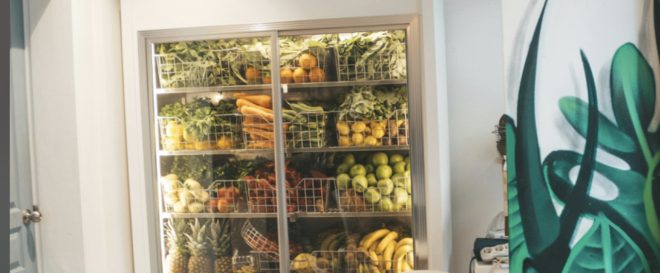A Brief History of Refrigeration

It’s a difficult concept to imagine a home or kitchen without a refrigerator, but in the scheme of history, the method of keepinggroceries cool in a refrigerator is a relatively new concept.
Although it is difficult to determine when people first began freezing water for their domestic purposes it is thought the Greeks, Romans and ancient Chinese all stored snow to keep food cool.Cultures in extremely cold climates would have naturally used primitive forms of refrigeration since before records began.
In the 18th Century Europeans would collect ice and salted large pieces of food before storing it deep underground – this would help keep food supplies eatable for months alongside canning, smoking, drying, or salting, and other methods of preserving food.
The Americans in the 1860s were introduced to the icebox, which is an early basic version of what was to become the fridge. These earliest models of the refrigerator were filled with one large chunk of ice. The icebox cabinet was insulated with fresh ice to be refilled every week or so. This model can still be found around the world in areas without electricity or where small pop-up commercial vendors need to be mobile and operate in areas without electricity – think music festivals, sporting events, and other outdoor events where a refrigerator would not be practical.
It wasn’t until the 1910s that the first home refrigerator was introduced, and like all technologies was considered a luxury item for most but the richest Americans when it first became domestically available. The first air compressors were noisy and these units were often kept in the basement with an additional icebox upstairs. Roll forward to the 1920s and the earliest forms of the self-contained units appeared using evaporative cooling technologies, and, although, still considered a high-end compliance,were becoming more commonplace in American kitchens.
In Australia, the first commercially available American-designed refrigerator was produced in 1923 by Edward Hallstrom. Using kerosene as a power source. This unit was popular in outback locations where commercial ice was unavailable. By 1935 Hallstrom had launched the Silent Night model that ran on either electricity or gas. This unit was relatively cheap to produce but expensive to run, to remedy this Hallstrom negotiated deals with electricity suppliers for owners of the unit a subsidy of electricity bills.
By 1964 an estimated 94% of Australian households owned a refrigerator. In the 1970s fridges became more compact and energy efficient as governments around the world decided to put a priority on conserving energy usage.
Appliance designs of the 1990s aimed to be sleeker, with the introduction of French-style doors and stainless steel. Today’s refrigerators are somewhat similar in design as bulky refrigerators of the past were gradually falling out of style, with more contemporary and glamorous designs catching the eye of the consumer. Each decade furthers the advancement of electricity costs and energy efficiency.
Today we have digital technology enhancing our appliances but the overall function remains the same since those early 20th century models.



